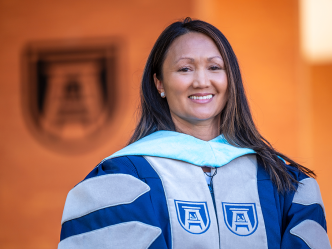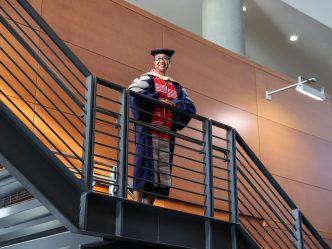When Amanda Behr was appointed chair of Augusta University’s Department of Medical Illustration in the College of Allied Health Sciences and The Graduate School, specifically taking on the curriculum of the business class, she saw an opportunity to explore new avenues for students to gain valuable experiences while broadening their skillsets beyond the notable science and art concentrations.

Behr wanted to give her students a unique experience that would set them apart in a competitive workforce while taking them a little out of their comfort zones.
In speaking with Lynsey Steinberg, a fellow licensed medical illustrator at Augusta University who has served as an assistant professor, Steinberg talked about the Innovate Competition and how medical illustration could use that as a framework for something unique.
“It was an opportunity to look at areas where students could try something a little different, and Lynsey brought this unique perspective with the Innovate Competition. We thought maybe that would be something that we could incorporate into our business course, kind of a ‘Shark Tank’ experience for our students in some way,” Behr said.
With a general idea beginning to take shape, Behr wanted a former student’s perspective on pitching to companies, so she contacted alumnus Brandon Pletsch, who works for Real Chemistry and Rad Science. In talking with Pletsch, Behr realized the benefit in having students compete and learn how to pitch to companies, similar to what many have to do upon entering the work force.
“Brandon works for Real Chemistry, which is a marketing company that works with pharmaceutical companies to make large exhibit designs for medical meetings. Since he’s used to pitching wild and grand ideas all the time to big companies, giant corporations, and his team is part of this creative idea generation team made up of medical illustrators, we thought, who better to help guide us through this process than him?” Behr said.
The first ideas were more directly tied to Pletsch and Real Chemistry, and how both sides could benefit from the project, but then an opportunity unique to Augusta University presented itself.

Brad Warren, dean of libraries at Augusta University, approached Behr in need of help designing a space for the Robert B. Greenblatt, M.D. Library, which was undergoing extensive renovations at the time.
“Dean Warren wanted some sort of exhibit design that could highlight the special collections that they have in Greenblatt and also the history of medical illustration being one of four accredited programs in the U.S.,” Behr said. “This was a unique opportunity to highlight this unique program and so he wanted to partner with us in some way to create this visually interesting space. So, in talking to Brandon, we decided we could just merge those two ideas together and give the students an experience of creating something for real space.”
Warren was excited by the prospect of creating a unique design for the Greenblatt Library, highlighting a prominent program on campus and having students be a part of that process.
READ MORE: Check out the new look for Augusta University’s Greenblatt Library
“I was intrigued by the idea to work with the students on a project that was related, but very different, from their degree program in developing an exhibit design,” Warren said. “Through my collaboration with Amanda and the outside designer, we were able to come up with a design request for proposal to outline our needs while also proving creative flexibility to the groups.
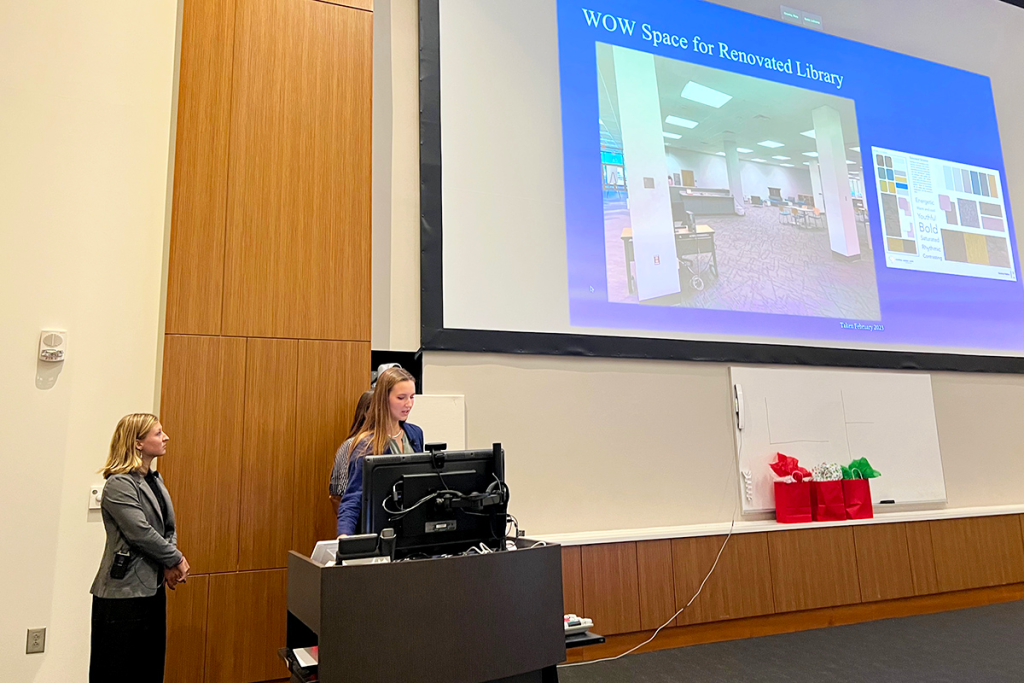
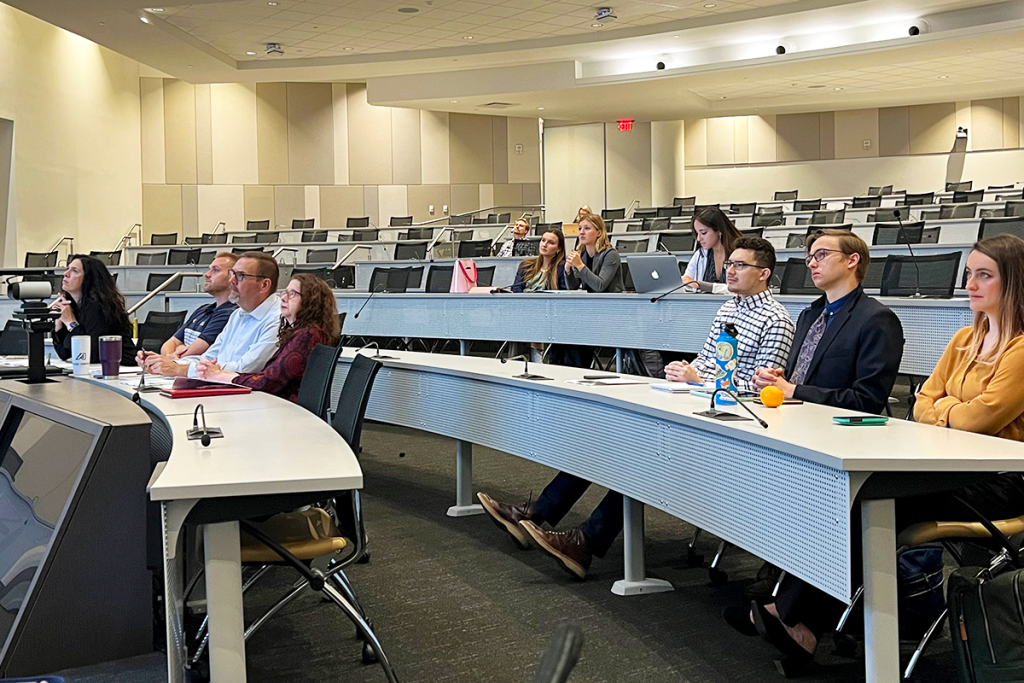
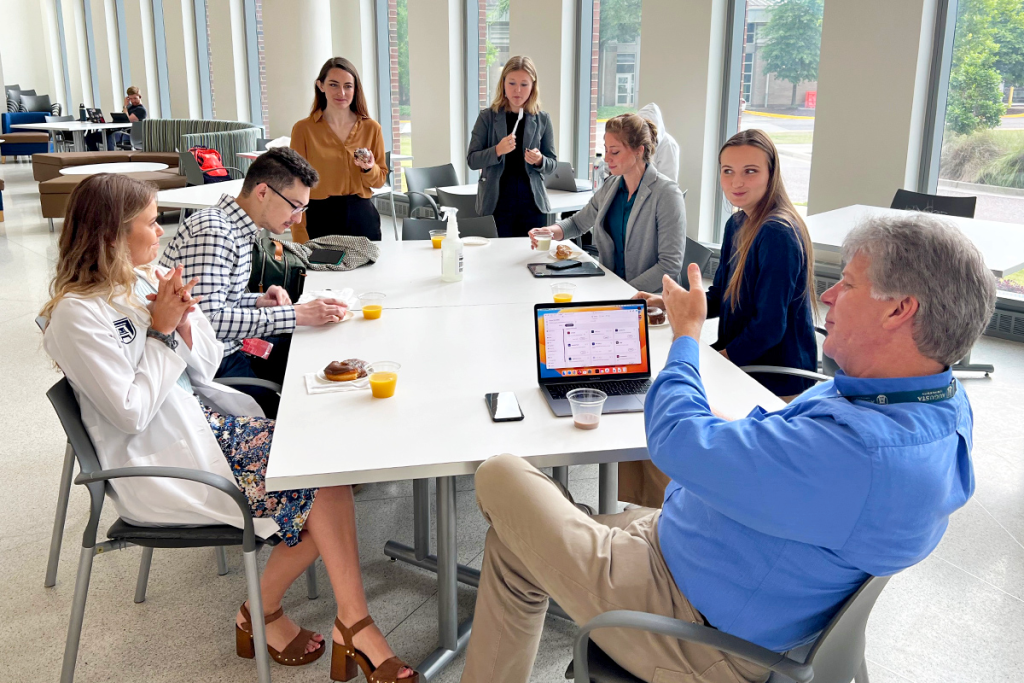
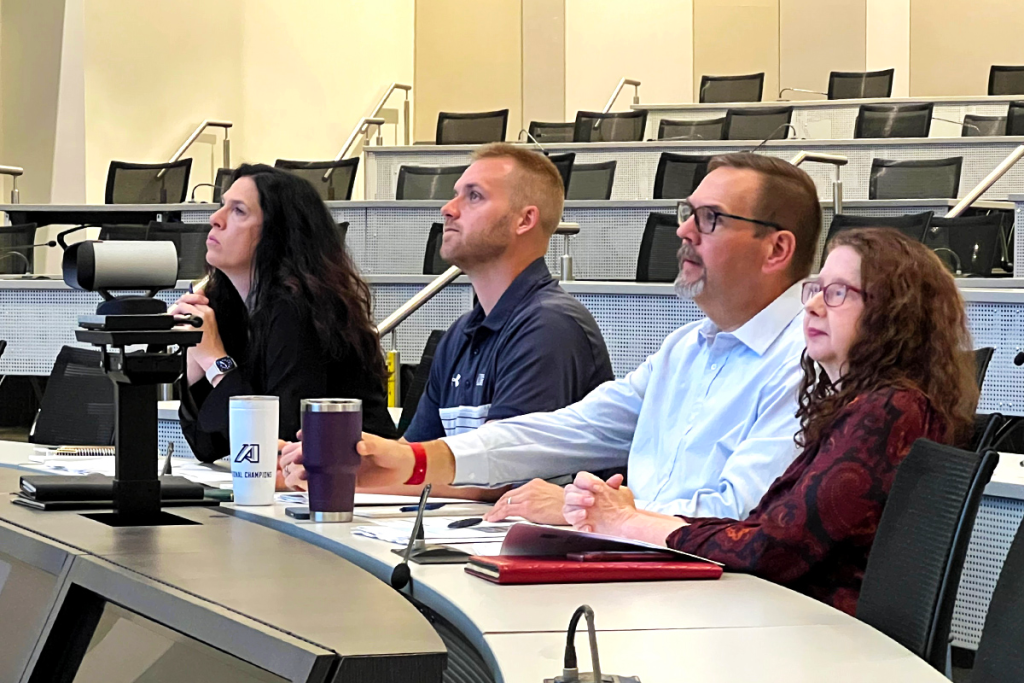
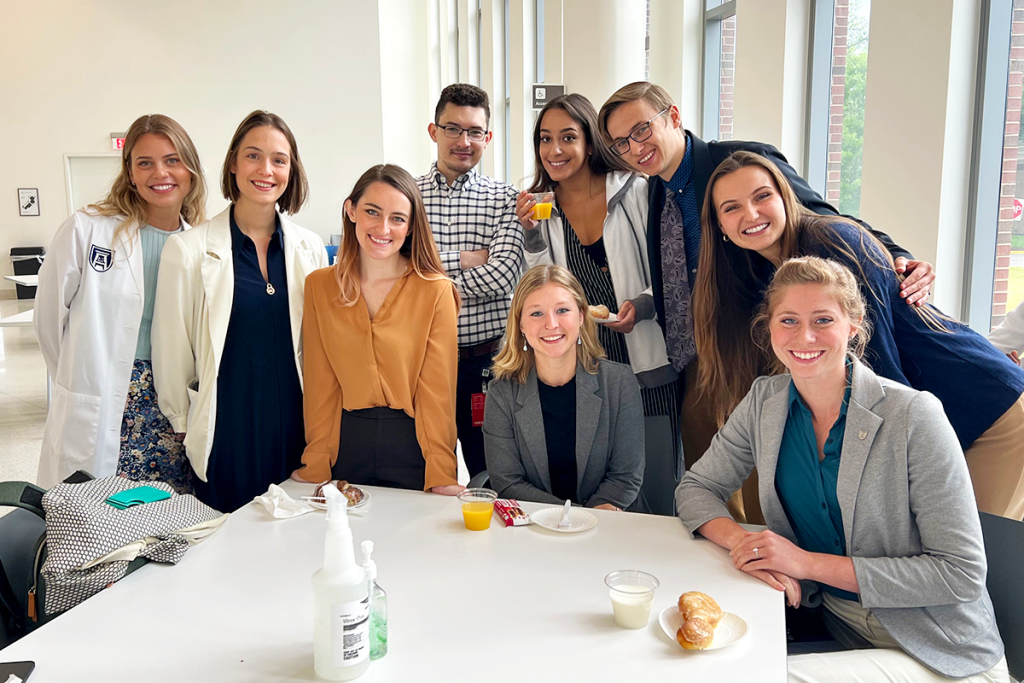
“I was very encouraged by their enthusiasm and real interest in the design process and know from my own experience that, while this was a graded project, it was founded very much in the reality in working with a client, refining the vision and dealing with the significant constraints of staying within budget.”
With an outline nailed down for what the project would entail, Behr began fleshing out how to give her students the most beneficial experience possible, including having them go through the entire process, from responding to a request for proposal (RFP) to developing their idea by working in teams and pitching those ideas to a panel.
“Brandon and I served as coaches, with Brandon teaching the students how his company responds to an RFP, and he shared examples from big pharmaceutical company pay pitches. Our students were able to see what level of work they needed to create. It was a great experience because our students went through the entire process, not just one or two of the steps, including providing information for the final panel,” Behr said.
The team aspect of the project was a little outside of the norm for the students, as medical and scientific illustrators often work on projects solo. Collaboration is a big part of the profession, such as working with a client and other vendors to make sure dimensions are correct, but Behr admits many of the projects her students had worked on previously were mostly solo endeavors. This project was a great way for students to learn how to be more collaborative with each other.
Caeley Blechschmid, a member of the winning team, said the project was different than anything she and her classmates had worked on to that point, but the challenge — and getting to work with classmates who became close friends during their time at AU — was what made it fun.
“I think our minds have been mostly solo project-oriented the past few years, that this allowed us to use our more creative side a little bit more,” said Blechschmid. “Our group kind of split up the work of doing the sketches and modeling and all the fun things. On top of that, we had the chance to work with Brandon Pletsch from Rad Science, and they do this professionally. That was really cool to hear about how his company does all of this since that’s a route that some of our classmates might want to take. It kind of opened our eyes to more things we could do with this degree.”
Blechschmid’s team included her roommate, Alexis Guerra, and Zoë Elwood.
All three have since graduated from the program and accepted jobs where they will utilize their skillsets. Blechschmid accepted a job with Trial Ex, Inc. in Buffalo, New York, Guerra now works for UWorld in Dallas and Elwood accepted a job with MediVisuals in Richmond, Virginia.
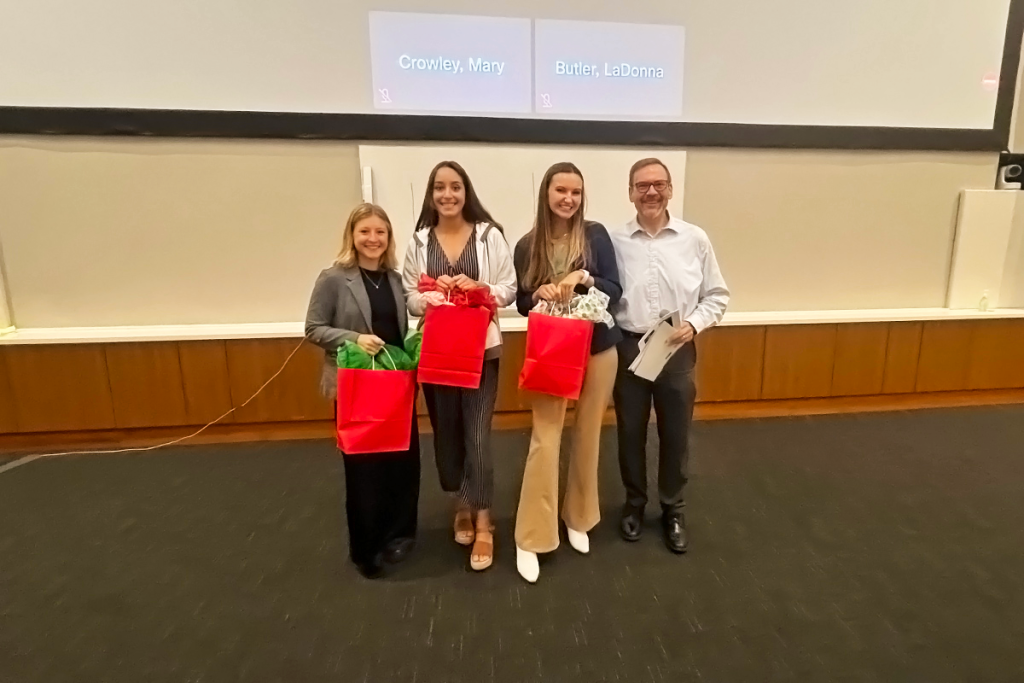
“This is kind of our first collaborative project that we did together throughout my time. Working with a group is a lot more efficient, honestly, because you can divide the work and then you can build and bounce ideas off of each other. I feel like I couldn’t have come up with all of this on my own,” Elwood said.
The group’s design was centered around a hanging 3D model showing the evolution of the depiction of proteins. Complimenting that is a column with virtual reality screens, a model for interaction, interchangeable glass display cases to show pieces or artifacts and a timeline of the history of MCG and the medical illustration program.
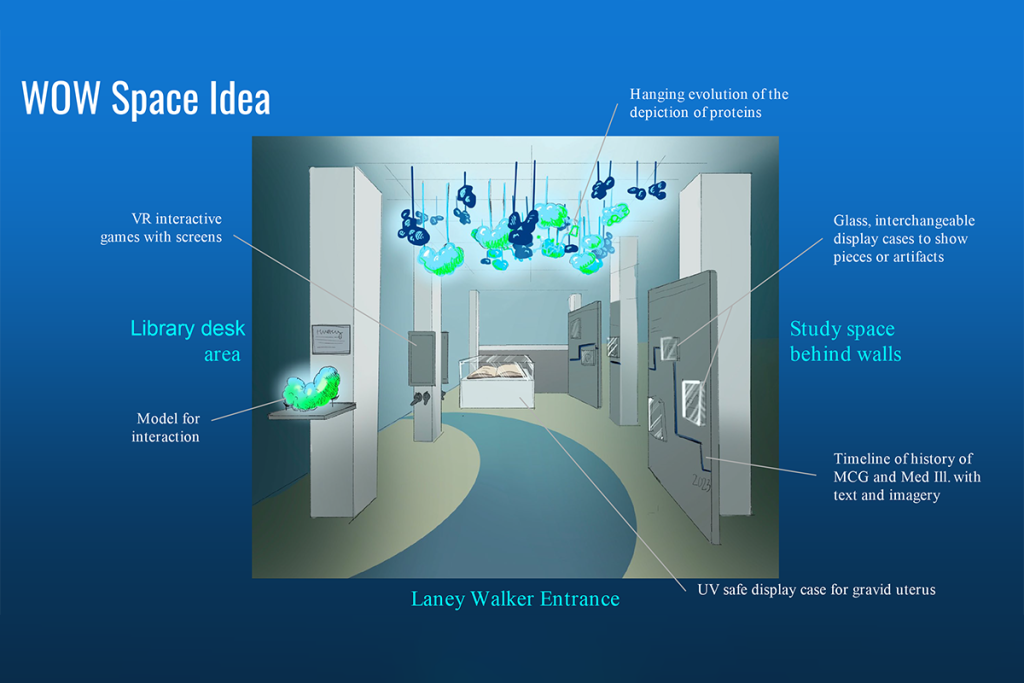
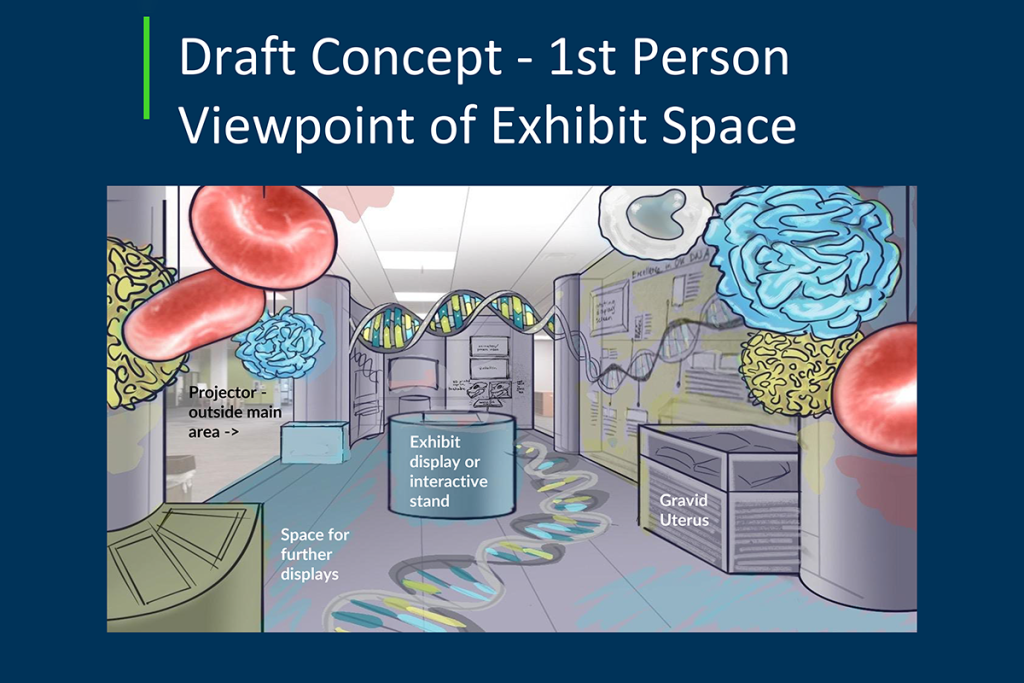
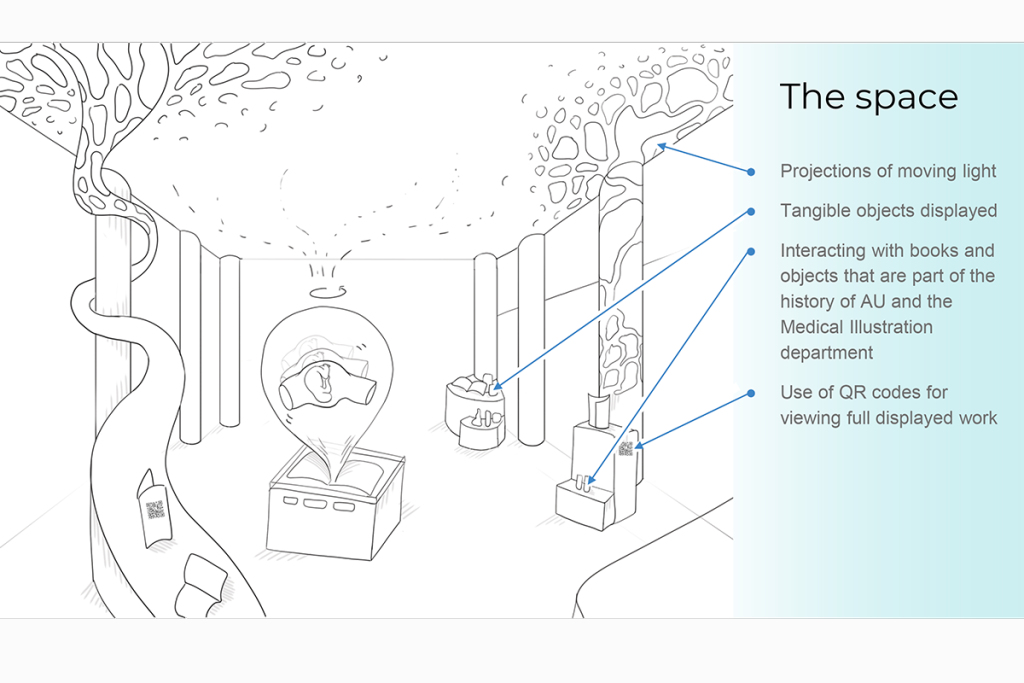
“The hardest part was the fact that we had never really done a project that would take up so much space before. We typically work on illustrations and animations, but to actually idealize something that would be brought to a large public space is something I don’t think any of us were familiar with, but we had excellent guidance from our professors and from outside sources,” Guerra said.
“We thought the hanging protein structures could be a really eye-catching object that people could see and gravitate to from across the library. Something that can really draw people in to explore the exhibit and check it out a little bit more. I think it was a really cool learning experience for all of us.”
Aside from conceptualizing their ideas, each group created presentations for a panel comprised of Warren, Dean of The Graduate School Jennifer Sullivan, PhD, Augusta University Director of Marketing Taylor Lamb and Director of the Greenblatt Library Kathy Davies.
Behr sees this as a great starting point and hopes projects of this magnitude and scope can evolve and expand to the rest of campus and even into the community.
“It was wonderful working with the library. What’s wonderful about this university is the ability to make these kinds of connections and make something like this possible. This project in particular, we threw something completely new at them. They had never seen something like this before, but their adaptability and ability to learn is incredible. I think that’s what’s so important within our field,” Behr said.
“It was wonderful to see the evolution of each group’s project and even the evolution in each of the students from when they came into the program to where they end up. They’re already extremely talented, but growing into true artistic scientists and lifelong learners, this was a great example of that progression.”
 Augusta University
Augusta University

